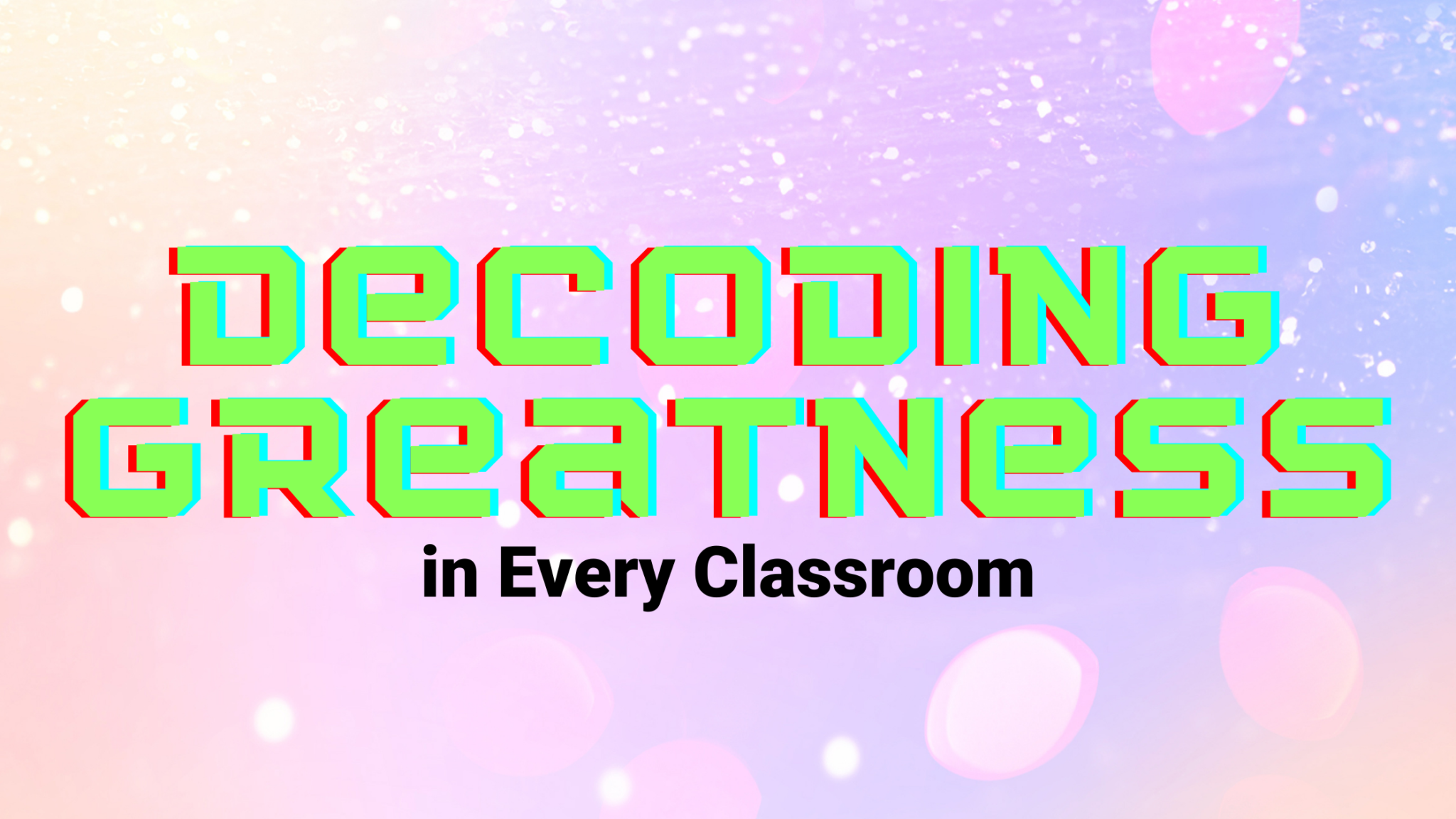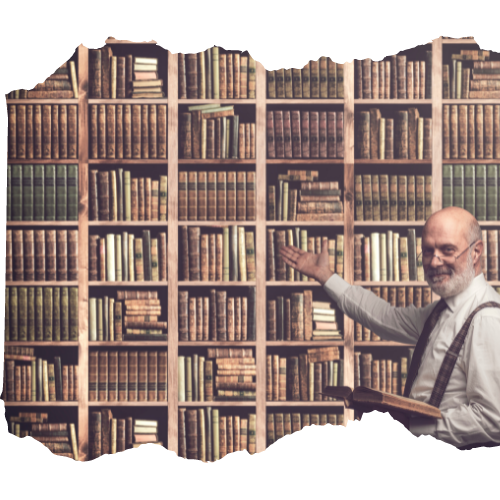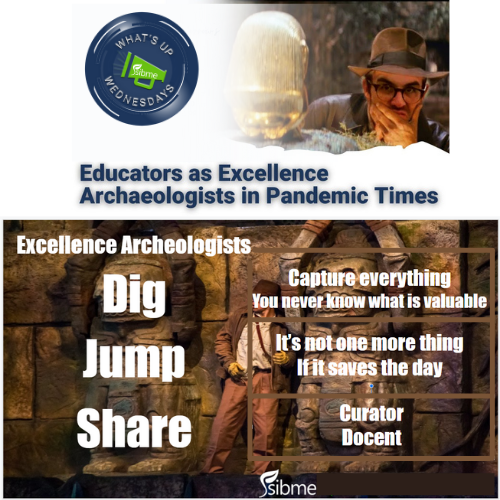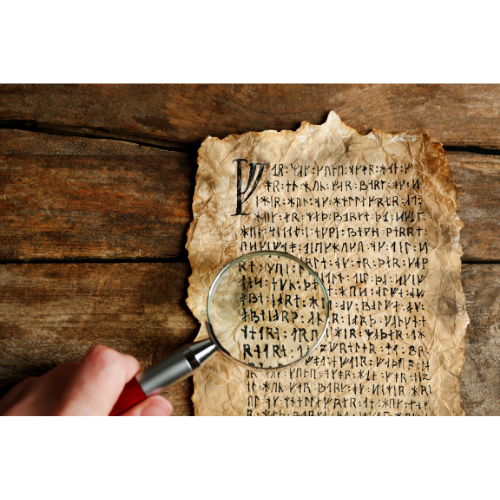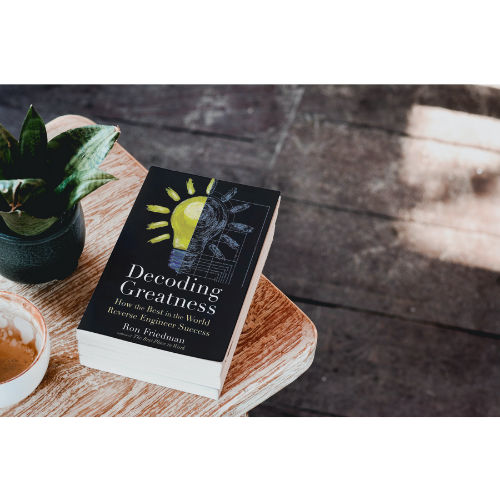Decoding Greatness in Every Classroom
We all know it when we see it: the “magical classroom.” There are some classrooms where teachers and students seem to be, well, clicking. There’s energy, engagement, and tons of achievement. But here’s the thing, every classroom can be a magical classroom, you just need to learn to decode greatness in the teacher’s actions.
This three-step process, from the book Decoding Greatness by Ron Friedman will help anyone find the science in the magical classroom. Use these three steps from Friedman’s book and you’ll be sure that every classroom in your school is a magical classroom.
Watch a short summary of Decoding Greatness from The Productivity Game
Step 1: Collect
Districts are always looking for “best practice libraries” they can buy from some publisher or company, some outsiders, to show their staff what “great teaching” looks like. Of course, libraries like these can help your teachers become champions, but you don’t need to spend thousands of dollars showing teachers what learning looks like somewhere else. The best way to build a library of best practices is to look within, not without. Every classroom is magical at some point during the day. The key is in collecting not acquiring.
Instead of buying a “best practice library,” use modern technology (smartphones, webcams) to have everyone on your team build a “greatness library.” Teachers, paraprofessionals, administrators, and even students can capture great moments throughout the school day. These can be short video clips, curriculum resources, activities in lesson plans, or anything that contributes to magic in the classroom.
The important part of this step is that you shouldn’t be too concerned with finding the “right” things for your “greatness library”. Rather, Friedman suggests that everyone should find something that speaks to them, whether it’s something they’re proud of themselves or notice in anyone else. Having lots of artifacts in your “greatness library” makes the next step much easier, so be omnivores in your collection at first, decoding and curating comes later.
To learn more about being an Excellence Archeologist
To see how Houston ISD captures greatness, watch this on-demand webinar for free (registration required) in the Sibme Learning Center.
Step 2: Decode
Once you’ve got a good collection in your “greatness library”, the next step is to identify the key elements in great work that makes it great. After all, magic isn’t actually magic…it’s skill. If you can break down the prestidigitation behind the magic, you can easily crack the code and reproduce the trick. Friedman offers three techniques you can use to decode greatness in your collection
Get great tips on how to decode through effective, practice changing reflection in this on-demand webinar with Alisa Simeral.
Contrasting
Take a piece of work from your “greatness library” and find a similar piece of work that is good, but not great. Then ask yourself the question, “what’s the difference?” It’s important that you choose an alternative to your “great” work that is close to great. It is the small differences that really contribute to the magic. So don’t pick a mediocre or even bad lesson to compare to a great one. Instead, find two that are close, but where one just knocks it out of the part. Contrasting good and great helps you uncover the tiny differences that set magical classrooms apart from the rest.
Copyworking
This fancy word coined by Friedman has been used by artists for years: simple mimicry. Many great artists and musicians get their start by reproducing the great art of historical masters. By deeply studying a great lesson, and then copying it move by move, you develop muscle memory that contributes to your own greatness. The important key here is that you must be able to recreate greatness from memory, so you need to spend time really observing and memorizing what’s happening in that great classroom. The repetition required to memorize a great lesson and reproduce it will set you on the track towards your own greatness. As you develop more muscle memory from copyworking greatness, you’ll be able to piece together elements from “masterworks” to create your own greatness.
Reverse Outlining
Every great story starts as an outline. So by taking a finished product (a wonderful instructional strategy, for example) and identifying its structure and metrics, you can begin to find an outline that will contribute to your own greatness.
For example, if you’re listening to the most popular TED Talk of all time, “Do schools kill creativity?” by Sir Ken Robinson, identify the structure: Introduction (13%), Thesis (2%), Anecdotes to support the thesis (21%), Explain status quo (25%), Discuss current challenge (5%), Potential solution (10%), Close with an inspiration story (25%).
Then, collect metrics:
- Number of times the thesis was repeated: 3
- Number of questions posed: 25
- Percentage of script devoted to stories: 35%, persuasive arguments: 52%, supporting data and facts: 1%.
Now, you have a rough blueprint to craft a great speech.
As you can see, this outline must be pretty specific to work. You have to dig in to get the level of specificity needed to use the outline to create your own greatness from what you’ve learned. Find the “bullet points” that contribute to the greatness in what you observe, but then “weight” each of the bullet points so you can figure out how much importance, time, and effort each bullet point gets in the overall course of what you observe. Those metrics are crucial to the success of your reverse outline.
Doug Fisher and Nancy Frey have simple solutions for teams who want to reverse outline
If you want to watch a coach decode math instruction, check out this playlist from the Coach Replay show
Step 3: Evolve
Of course, anybody can recreate a performance of a great song note for note. A carbon copy of the Mona Lisa might look like greatness, but it’s not. So decoding greatness isn’t enough to achieve the magical classroom you desire. In order to become great yourself, you must take what you’ve learned to the next step. Friedman’s final step is the easiest to explain, but the hardest to accomplish: iteration. To iterate, you must take what you’ve learned and improve upon it in some way. Meer mimicry will get you to good, but greatness requires originality. Decoding greatness will get you a blueprint, but it takes a real artisan to produce the final product. Iteration requires a willingness to try something new. Every classroom is unique and each student’s learning is something only they will experience. So take what you’ve learned and build upon it so you can find the element of magic that makes it your own.
Sibme Missions
Download our Sibme Mission Cards to find strategies that teachers, coaches, and leaders can use to decode greatness starting in seconds.

